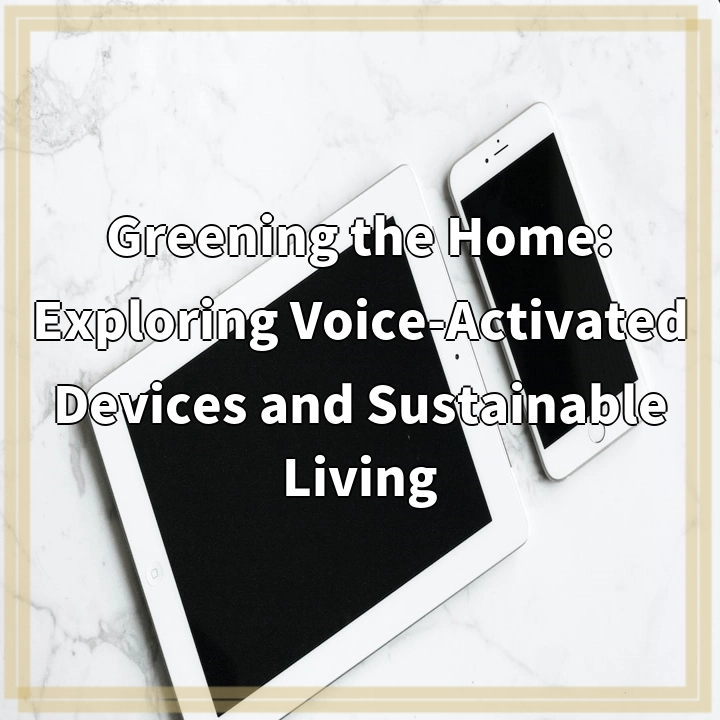
What it is:
Voice-activated home devices, such as smart speakers and virtual assistants, have gained significant popularity in recent years. These devices utilize voice recognition technology to perform various tasks, from controlling household appliances to providing weather updates and playing music. As technology continues to advance, voice-activated devices are becoming an integral part of many homes, offering convenience and simplifying everyday tasks.
Real-World Problems:
While voice-activated devices have numerous benefits, they also present real-world problems in terms of their environmental impact. Here are some of the key issues associated with these devices:
Energy Consumption:
Voice-activated devices need to be constantly connected to a power source, consuming energy even when they are in standby mode. While individual devices may have low power consumption, the collective energy usage across millions of households can be significant. This puts additional strain on the power grid and contributes to greenhouse gas emissions.
E-Waste:
As technology evolves rapidly, many households upgrade their voice-activated devices frequently, leading to a growing problem of electronic waste (e-waste). Improper disposal of electronic devices can release harmful chemicals and contribute to pollution, as well as deplete valuable natural resources. Finding sustainable solutions for the disposal and recycling of these devices is crucial.
Privacy and Data Security:
Voice-activated devices constantly listen for voice commands and gather personal data to provide tailored experiences. While this functionality offers convenience, it raises concerns about privacy and data security. There have been instances of unauthorized access and data breaches, highlighting the need for robust security measures and increased user awareness.
Manufacturing and Supply Chain Impacts:
The production of voice-activated devices involves the extraction of raw materials, energy-intensive manufacturing processes, and often exploitative labor practices. Additionally, the global supply chain required for these devices poses challenges in terms of carbon emissions from transportation and environmental impacts from mining operations.
Ethics of Planned Obsolescence:
Many voice-activated devices are designed with a limited lifespan to encourage frequent upgrades. This planned obsolescence adds to the e-waste problem and undermines sustainability efforts. Ensuring longer device lifespans and providing options for repair and refurbishment can help reduce the environmental impact of these devices.

Solutions for Greening Voice-Activated Home Devices:
Energy Efficiency:
Manufacturers should focus on improving the energy efficiency of voice-activated devices, ensuring they consume minimal power when not in use or in standby mode. Additionally, users can actively monitor their device’s energy usage and adopt energy-saving practices to minimize their environmental footprint.
E-Waste Management:
Proper e-waste management is crucial for reducing the environmental impact of voice-activated devices. Manufacturers can design devices with modular components that are easy to repair or upgrade, extending their lifespan. Encouraging responsible recycling and establishing e-waste collection programs can help divert these devices from landfills.
Privacy and Security:
Manufacturers should prioritize robust privacy and data security measures, ensuring user data is protected from unauthorized access. Users should also take steps to understand privacy settings, review data sharing options, and regularly update their devices and software to minimize security risks.
Sustainable Manufacturing:
Manufacturers should strive for sustainable practices throughout the production and supply chain of voice-activated devices. This includes using environmentally-friendly materials, implementing cleaner manufacturing processes, and ensuring fair labor practices. Supporting companies that prioritize sustainability can also create a demand for greener options.
Longevity and Repairability:
Designing voice-activated devices with longer lifespans and providing repair or upgrade options can greatly reduce e-waste. Manufacturers should consider offering repair services, providing access to spare parts, and supporting independent repair businesses. Users can also extend the life of their devices by taking proper care, avoiding unnecessary upgrades, and opting for repairs instead of replacements.















